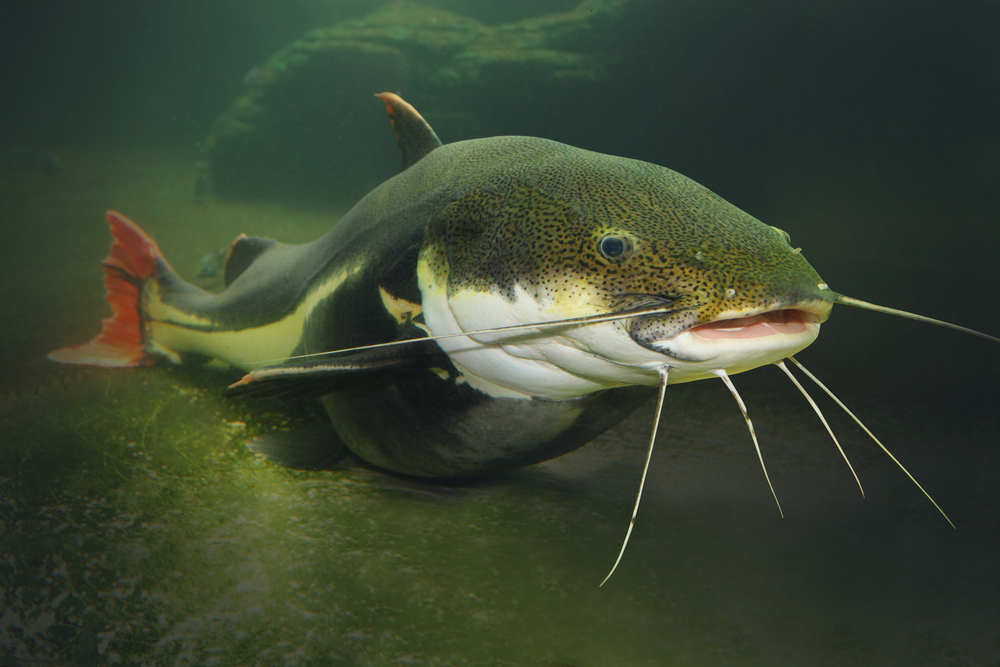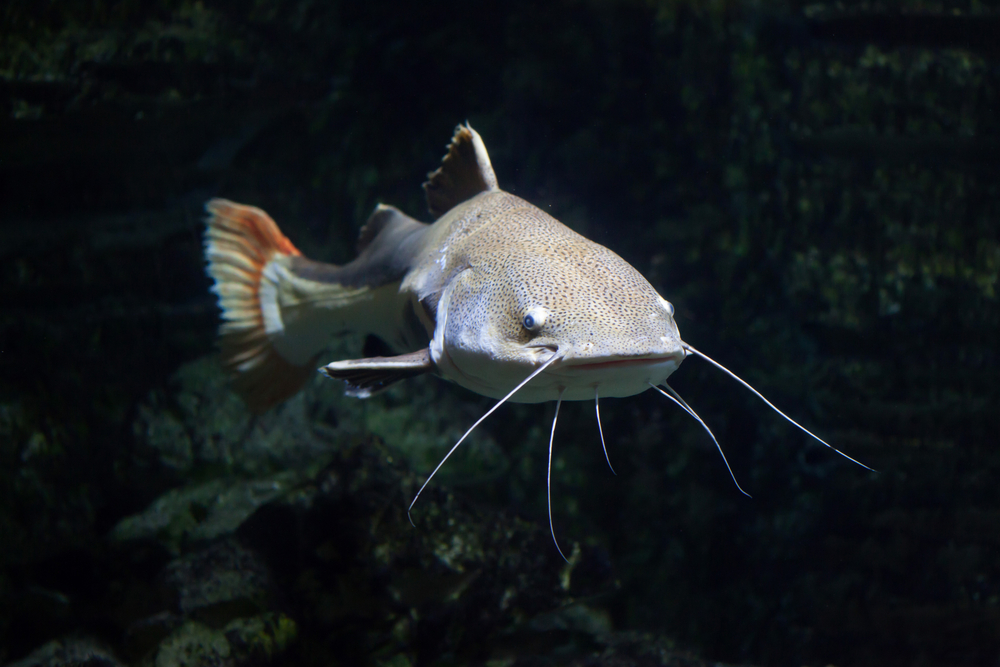Catfish Species Identification
Introduction
There are nearly 3,000 species of catfish distributed across the globe, all ranging vastly in size and look and belonging to numerous different families.Popular fishing species include channel, flathead, bullhead, and giant catfish. This section will deal with the most populous North American variety, the channel catfish.
Appearance
Catfish are so named for their prominent barbels, which resemble a cat’s whiskers. Channel catfish, like most in the species, have no scales, but have a thick, hard body. Channel catfish have blue to olive backs, whitish bellies and silvery sides mottled with distinctive black spots of varying sizes – the only species of this family to have such spots. They generally have eight barbels and a deeply forked tail.
Maximum Size
The largest catfish are the Mekong giant catfish of Southeast Asia. These catfish can grow to weights of over 600 pounds (272 kg) and is considered the largest freshwater fish in the world ( for comparison the largest saltwater fish in the world is the whale shark). The IGFA world record for channel catfish is 58 pounds (26.3 kg).
Geographic Range
Catfish can be found on every continent in the world except Antarctica, with the majority of populations living in tropical regions. Channel cats are widespread in North America, stretching from lower Canada and the eastern and northern United States, southward towards northern Mexico.
Habitat
Most catfish live in shallow, running freshwater bodies of water. Channel catfish thrive in small and large rivers, reservoirs, natural lakes, and ponds.
Food
Channel catfish are primarily scavengers, feeding on any type of vegetable or animal matter that happens to float by. However, larger channel catfish will use their speed to go after small fish, or even go after fish eggs.
Spawning
Channel catfish reach sexual maturity in 3-6 years. They prefer temperatures of around 75°F (24°C) to spawn, doing so in late spring or early summer.Information courtesy of Wisconsin DNR and Texas Parks and Wildlife.
Why Are Catfish So Popular?

Few fish species have quite the same number of rabid fans as catfish do. Although these fish are found all over the world, in North America they are especially abundant. Rivers, lakes, streams and even ponds can prove to be fertile grounds for catfish. The fact that they can obtain enormous size helps make catfish pier fishing a whole lot fun.
Catching catfish is a popular past time that has reached cult status in the Southern US states. It’s a cultural passion that has spread all over North America.
Despite their unattractive appearance, slippery skin and sharp spines that make them very difficult to handle, catfish are one of the most popular types of freshwater fish for a few reasons.
Because of the different varieties of catfish, they are able to live in various conditions, and can also grow to massive sizes. This means fans of big catfish fishing can travel to exotic locales and score monstrously huge catfish that make for amazing photos.
Catfish are one of the best tasting freshwater fish, too, and throughout the Southern US there are numerous restaurants that specialize in serving them. Many people also cook and eat them on a regular basis with recipes ranging from fried catfish so popular Down South to baked or even barbecued catfish.
Since they are easy to fish for and taste so good, catfish have become incredibly popular with anglers. You don’t need much in the way of tackle or gear to catch them. In fact, some brave anglers only use their bare hands!
CATFISH FISHING TIPS
Preparing for spring is certainly an endeavor in patience and persistence. There are so many things to remember in the late winter and early spring preparation it is hard to say where to start. I usually begin with trying to whittle down all the tackle I bought last summer and fall down to a manageable level. I used to carry 4 hard sided plastic tackle boxed and two soft sided.
The Many Methods of Catching Catfish
Catfish fishing techniques vary widely depending on where you plan to fish. Everyone has their own catfishing tips they believe work best. The truth is, you can find success with most methods if you work at it and apply it under the appropriate conditions.
One of the most popular methods in the southeast section of the United States is to put lines out at night. Some people use a trot line, which is a long line tied across the water. You could also use two anchor points in the water for the same effect. Hooks are situated every two or three feet along the line. This is an effective method because of the amount of hooks available to catch the fish and works quite well for those targeting flathead catfish.
Similar methods to trot lines are limb hooks and bank hooks, in which a line is either tied to a limb above the water. You can also opt for a line tied to a stake on the bank. Those river fishing for catfish often go with this method and score big.
Set poles, one of the old fashioned approaches to fishing, involves setting a catfish fishing pole. You can pick up catfish fishing rods about 12 to 15 feet long at most tackle shops in areas where catfish are popular. The line is cast out, and the rod is secured with a forked stick or rod holder on shore. The bail is either left open or the reel is set to a special bait running position that allows the fish to swim with the bait with minimal resistance until the angler is able to set the hook and fight the fish.
Jug fishing for catfish is one of the more interesting methods out there. A short line with a hook and bait is tied to a bouyant jug and left to drift in the water. Anglers keep an eye on the jugs and chase them down with a boat when they start to move. Some people like this method because it requires very little catfish fishing tackle. Jug fishing catfish is definitely a relaxing way to enjoy time with friends without having to pay close attention to your line.
Drift fishing for catfish involves using a boat. With this method, you simply drift in the current and and drag the bait along with you. This method can work well because you can easily cover a lot of water.
The most extreme method for catching catfish is known as noodling or grabbling. In this method of fishing, an angler locates a typical place where I catfish would live, such as a hole under a log are rock. They then dive under the surface and put their hand into the hole. The catfish usually grabs onto the hand, and the angler wrestles the fish to the surface. It should be noted that this is an extremely dangerous method of fishing, which is illegal in many states. Cuts and bruises are common, and drowning is a potential risk. In addition, a lot of the areas where catfish live are shared by alligators and snapping turtles.
As for bait, while there is commercial catfish bait available, many homemade baits can be just as effective or better. Catfish find their food by tasting minuet particles in the water, so most baits that have a strong odor and will disperse flavor and scent into the water will work well. Typical catfish bait choices include chicken liver, dough balls, cheese balls, worms, and dead fish.
Three Catfish Fishing Secrets

- Catching a big one is not about your catfish fishing equipment. You can go fancy if you want to, but a marshmallow and a good old fashioned pole can save you money and bring you a fish worth eating, too.
- Flathead catfish fishing is easy to do if you use trot-lines. A whole live perch on a 6/0 or 7/0 hook is going to work best in the river. Crappie can work for this method, also. However, you want to make sure that your local game fish regulations allow for using live crappie or perch as bait before you get started.
- Avoid using frozen bait at all costs. This is a waste of your money or your time, if you made it yourself. Make things easier on yourself and go out after a good rain, gather up some local worms and you’ll see the catfish are in a feeding frenzy. This is the secret to a fishing trip you’ll remember.






